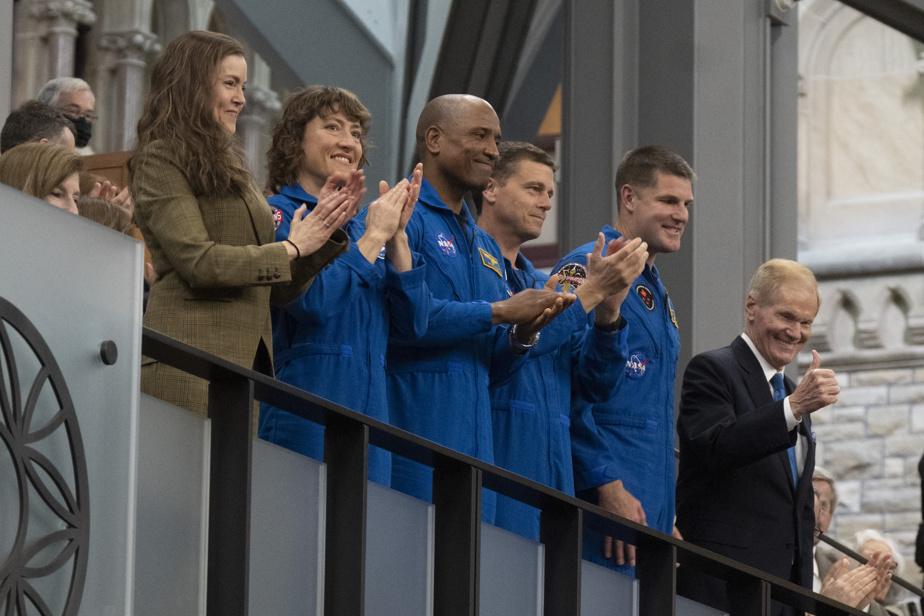They will respectively be the first African-American, the first woman and the first Canadian to travel to the Moon, in 2024 or 2025. Earlier this week, the crew of the Artemis II mission made a brief tour of Canada . La Presse met the astronauts at the United States Embassy in Ottawa.
“We’re here to inspire Canadians, to connect,” says Ontarian Jeremy Hansen, who is the only Artemis II astronaut who has never been in space. Victor Glover paid tribute to John Chapman, founder of the Canadian space program.
How important is it to have a crew with so many firsts? “My participation in Artemis II goes beyond me, answers Christina Koch. We are here for all of humanity. You have to make the most of everyone’s skills. Victor Glover replied that the diversity of his team stems from “the efforts of the people who, a long time ago, chose astronauts like us.” It was not easy to make that change.” And Jeremy Hansen added that the crew of Artemis II demonstrated American leadership, able to make the most of Canada’s “genius”.
The four astronauts come alive when talking about Starship’s first orbital test last week. The SpaceX rocket, which exploded after four minutes of flight, well before arriving in orbit, will be used for the Artemis III moon landing, scheduled for 2025. The Orion capsule bringing astronauts to the Moon will be docked with Starship in lunar orbit. For other Artemis missions, Orion and Starship will dock with the Gateway lunar orbital station for transfer.
Commander Reid Wiseman drew the comparison to the NASA-developed SLS rocket, which takes the Orion capsule to the Moon and first flew with the unmanned Artemis I mission last November. “It took years to perfect the technology before the first flight” of SLS.
Didn’t last week’s test cause serious damage to SpaceX’s launch pad in Texas? “They knew there would be, but not that many,” says Glover, who says SpaceX is working on a new launch pad at NASA’s Kennedy Space Center in Cape Canaveral, Florida, which will be used by Starship , and also adapts an existing Cape Canaveral launch pad.
When La Presse broached the subject of the usefulness of a tie-up with Gateway, a publicist intervened to ask to stop asking questions relating to SpaceX.
All four astronauts were children when space shuttle missions began. Their selection confirms that the “Apollo generation”, which became astronauts because of the example of the lunar program half a century ago, gave way to the “space shuttle generation”. NASA officials hope that the Artemis program will inspire an “Artemis generation”. Will the “space shuttle generation” have a different approach than the “Apollo generation”?
“I don’t think so,” said Mr. Glover. The Moon is unique. In fact, bold projects are called moonshots. We have all seen videos of Apollo. »
“When I was 5, my parents added the Kennedy Space Center to a trip to Florida because I had been talking about Neil Armstrong all the time ever since I saw a picture of him on the moon. I have a photo of my face in a cardboard cutout of an astronaut. Afterwards, I had the inspiration and people helped me to realize my dream. »
“I did space camp when I was in high school. I decided that I would not check the boxes of the training offered to us to become an astronaut. I don’t have a traditional astronaut background. »
“When I was younger, I followed the missions of the space shuttle, but I rather dreamed of being a stuntman, a firefighter or a policeman like my father. The desire has matured. »
“When I was chosen for Artemis II, one of my best friends when I was 7 years old contacted me to congratulate me on achieving my goals then. But I don’t remember at all wanting to be an astronaut so young. I remember thinking about it after the Challenger exploded in 1986.”

